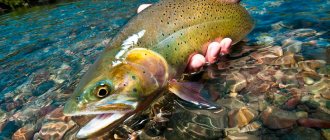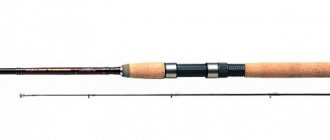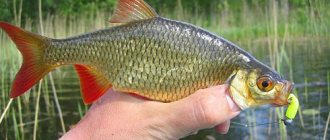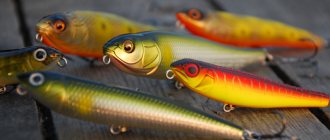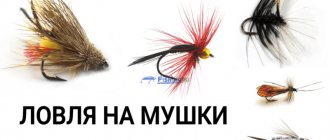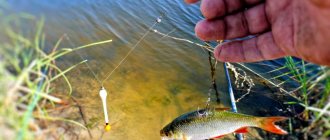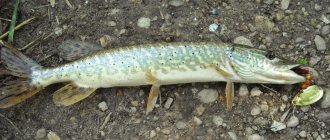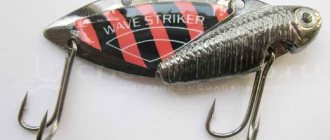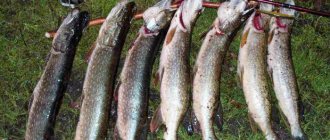Most people mistakenly believe that fishing is a hassle. And in order to get a more or less decent catch, you need to spend a considerable amount of money to purchase the necessary equipment. This is far from true.
It turns out that you can fish using quite accessible materials. For example, you can get a wide variety of fish with a simple plastic bottle.
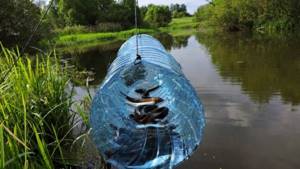
One of the most common species for bottle fishing is pike. However, it is quite possible that you may come across carp or carp. Depending on the body of water you are fishing on.
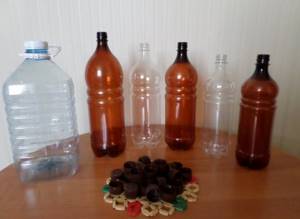
On the Internet you can find a large number of videos of bottle fishing. The main aspects of this type of fishing can be learned from this article.
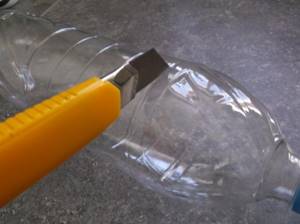
Methods of catching fish with a plastic bottle
To catch fish with a plastic bottle, you will need a fishing line, a hook and a sinker, the purchase of which will not require large financial costs:
- Bottles of any size from 0.5 to 2.5 liters are suitable. Finding such bottles is not difficult;
- if the tackle with the bottle breaks or deteriorates, it will be very easy to make a similar device;
- Fishing with a plastic bottle is convenient because it acts as a reel;
- It is not necessary to fish with a bottle from a boat or boat; it is quite possible to do it directly from the shore;
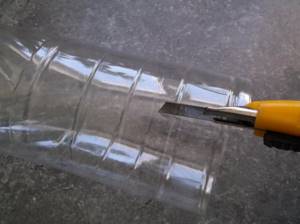
Casting a sinker wound on a bottom tackle bottle
Before casting the bottom tackle, we mount a leash(s) with a sinker in a carabiner tied to the end of the main fishing line.
We bait or place baits on the hook(s), and take the bottle with the donkey bait wound in one hand. Next comes the unusual process of casting bottom gear, which you need to pay attention to.
To throw a load of tackle, the bottle in the neck area is clamped in the left hand. With the right hand, either immediately or with a swing, the donkey load is thrown.
The following is an important piece of advice for beginners. At the moment the load leaves the hand, the longitudinal axis of the donkey bottle should be located on the same axis with the flight path of the load, or even better, track it.
The aerobatics of casting a sinker with a bottom wound on a bottle is when the bottom of the bottle drops following the approach of the sinker of the tackle to the water. In this case, minimal friction of the fishing line is ensured when leaving the surface of the bottle and, accordingly, the maximum flight range of the sinker of the bottom tackle.
Next, we attach a bottle of donkey to the rod, insert a fishing line into the slot of the rod and wait for a bite. A bell suspended on a fishing line serves as a bite alarm.
If you have only one bottom fishing rod or a small number of gear (2-3) and they are arranged compactly, then to record bites on the bottom gear you can install visual heavy bite alarms, which are much less likely to be swayed by the wind.
But if you plan to fish with the same bottom gear not only during the day, but also at night, then we will continue making a bottom for round-the-clock fishing. To do this, on the next page of the topic, we will install a light electronic bite alarm into its design.
Fishing with a bottle from the shore
Making bottle tackle for shore fishing is quite easy. You need to firmly tie the bottle with a rope, it will serve as a connection to the shore.
«>
Next, you should wind 5 to 9 m of fishing line around the bottle. The sinker must be tied to the edge of the base. A metal leash should be tied over the load.

The bottle makes it possible to throw about 4 tackles to different places. They can be tied to a bush or tree and left for a certain amount of time. If you do everything correctly, the catch will please you.
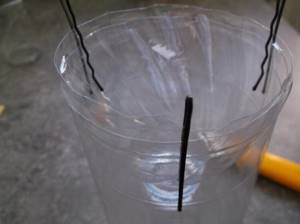
Fishing with a bottle from a boat
A bottle of one to two liters would be ideal for fishing in this way. A fishing line, up to fifteen meters long, is attached to the neck of the bottle.
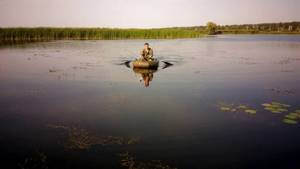
A sinker is suspended from the fishing line, which will not weigh more than one hundred grams. You need to make a loop on the base to mount the leash there.

Next, a hook is installed, its type depends on the type of fish you want to catch. Well, to prevent the fishing line from slipping off the bottle, you need to secure it with an elastic band.
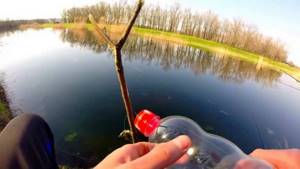
Fishing and a bottle - tackle
This unusual incident happened a couple of years ago, but I’m just now getting around to telling you about it.
Fishing with bottles
I then dreamed of going fishing for a whole week. I have already collected the gear, stocked up on bait, and prepared the bait. Yes, things didn’t go away. Finally decided - on Sunday! I hardly slept that night: the floats danced before my eyes, and the healthy fish still couldn’t get hooked. Real fishermen will understand what a state it is when you know: literally a few hours separate you from your favorite activity. Dawn had barely broken, and I was already on the river. No sleep in either eye. I sit quietly on the shore. It's early morning. The bite is not bad. In a feeding area, a hybrid of half a kilo regularly sits on a maggot. The fish tank becomes pleasantly heavier with each fish. Such a bite does not happen every day, and therefore I did not immediately notice that something strange was happening on the opposite bank. A boat was slowly floating along the river: a guy was rowing, but his companion was active: waving her arms and dropping something overboard from time to time.
There is, of course, nothing unusual about a guy taking a girl on a boat, no. And the young man himself did not raise any questions: he sat on the oars and rowed slowly. But the actions of his companion first caused surprise, and then indignation. Well, how would you react if you saw that very close to the place where respectable fishermen are sitting with their fishing rods, someone will start throwing plastic bottles on the water. And not just one or two, as unfortunately, but still happens when idle revelers ride on boats, but about a dozen - one after another, that are lined up in a chain in the wake of the boat. In general, irritation grew in my soul.
They scattered bottles, which means they anchored nearby. They are sitting in a boat, their eyes are sore, bottles are floating in the water. The mood is downhill, and even the catch is no longer so pleasing. Who likes to see their float in the middle of the garbage? Okay, at least they behave quietly - they don’t scare the fish. It’s just... It’s strange how these bottles float. They don’t spread far, and they stay in the water too neatly, or something... Bottoms up. And then the plastic behaved just like a float - it swayed lazily a couple of times and floated along the waves... It stopped for a while and swam again... The guy and girl in the boat quickly weighed anchor and hurried to the bottle they had thrown. Imagine my surprise when the container tore out of their hands and, practically going under the water, again vigorously tore to the side. About five times the boat had to catch up with the recalcitrant bottle until it finally fell into his hands. On the shore, almost the entire fishing fraternity watched this action, having abandoned their fishing rods.
I think you already guessed that there was a huge fish literally a meter under the bottle. Pike. A neighbor on the shore a little later, when the passions had subsided, said that this tackle was familiar to him. True, he himself did not fish with a bottle, but he heard what it is and how a plastic bottle can also serve a fisherman in various guises. Interesting? Well, if so, I’ll tell you now.
Plastic bottle - both a circle and a donk
It would be quite logical to start with the unusual gear that I saw on the river. Probably only in Russia, which, as the well-known saying goes: “Cunning in inventions,” could have thought of using outright trash as more than catchy gear. To prepare a mug from a bottle you will need:
- empty plastic bottle with a capacity of 0.5 l - 1 pc.;
- fishing line (diameter and length depend on how deep the pond you choose is, and what kind of fish you plan to catch);
- two pieces of rubber cambric with a diameter of 5–7 mm;
- stationery eraser - 1 pc.;
- piece of cork;
- sinker;
- hook.
In other words, nothing supernatural. Let's start installation.
First the lid. A hole is drilled or burned into it, into which a loop of thick copper wire is inserted using two spacers. It is better to seal the hole with a sealant to prevent water from getting into the bottle. A second one is attached to this loop, with a line clamp.
A blind loop is made on the fishing line, thrown over the bottle, and tightened. Rotating the bottle, we wind the remaining fishing line around it. We put both rubber cambrics on its free end. One will press the fishing line against the lock, the second will act as a stopper on the fishing line. An elastic band will fix the fishing line at the desired depth. When the fish bites, the loop will easily slip out from under the elastic and the line will unwind, allowing the fish to be hooked. I don’t think there will be any problems with the hook: it all depends on the attachment. For live bait - a double or tee, for a vegetable bait a single is enough.
And now the key point: if the bottle is used as a circle, then a small load will be enough. And if you plan to install donks, then you will need a longer fishing line and a larger load. Ideally, in the form of a sausage (so that it can be easily transported by simply placing the same bottle) 250–300 grams.
What's good about this kind of gear? Firstly, if you prefer to go fishing light, then it’s enough to take gear and prepared bottle caps with you. It won’t be a problem to find the plastic itself near every body of water. However, if you have free space, you can take the bottles with you. Then it is very convenient to transport already assembled equipment in them.
This gear is light, buoyant, and, importantly, after fishing, you can simply organize a cache on the shore so as not to take bottles and mugs with you again. And if you don’t plan to return to this body of water in the near future, then after removing the fishing line, you can simply burn the rest on a fire so as not to litter the banks. And you can catch absolutely any fish with this tackle - from peaceful carp, crucian carp and bream to predatory pike, pike perch or asp. Just one thing: when catching a predator, you need to make sure that the leash is metal.
Cover-feeder
By the way, about catching peaceful fish. A plastic bottle cap, as it turns out, is an ideal material for creating a unique and incredibly catchy lid-feeder tackle. It is excellent for catching bream, carp, silver bream and roach.
All you need to make such a rig is a lead disc-weight, a carabiner, two or three hooks, some fishing line for leashes and the lid itself.
The lid is drilled out in the center and a thick fishing line with loops at each end is inserted into it. The outer loop is equipped with a carabiner, and the inner loop is equipped with leashes with hooks. A weight washer, repeating the shape and diameter of the bottom of the lid, is fixed on this surface.
The convenience of this gear is that the lid is both a weighting agent and a feeder. The inner container is filled with porridge, in which hooks with bait (maggot, corn, dough, bread crust) are drowned, and thrown to the fishing spot. You can use both a spinning rod and an ordinary telescopic fishing rod for this.
Top for catching live bait
When catching a predator already on the shore, the problem of catching live bait periodically arises. A small fish takes the bait reluctantly, and sometimes it’s quite the opposite - too willingly, but not a small fish. Fish, of course, is also needed for fish soup, but for seducing a predator, a half-kilogram crucian carp is not the best option.
This is where plastic bottles come to the rescue again. True, you will have to assemble the little one at home. This will require very little time and effort, as well as two two-liter bottles. The easiest way to solder plastic parts is on an electric stove.
So, the bottles are cut. The main thing is that the cut line is as even as possible, because then the parts will have to be spliced. We completely remove both the neck and the bottom of one bottle, and remove only the neck from the second bottle.
We perforate the “body” of the first bottle using a sharpened tube with a diameter of 5 mm. If it is not possible to find such a tube, you can simply use a soldering iron. Then we splice the resulting parts together. You will also need the neck of one of the bottles. It will need to be turned over and inserted into the perforated bottle. You will get a kind of funnel. The seam should also be soldered, and then three holes should be made a centimeter below the soldering line so that the bridle can be secured. The tackle is ready. Doesn't remind you of anything? Right! A smaller version of the one that was called “muzzle” among fishermen. We put a few pieces of bread inside for bait and wait for a sufficient amount of bait to be collected. However, the little wren may not be taken out of the water for a long time. They took as many fish as they needed and put them back into the water. This way the bait will be caught, and the live bait will be active all the time. Those fish that are not useful will simply go back to their native element at the end of fishing.
Craftsmen use such bottles to make a container for storing floats and a device for catching aquatic insects. When going to a pond for several days, they store water, cereals, salt, sugar in them, and hide matches from the rain. I knew one Kulibin who even assembled a boat from plastic bottles. The strength of the material, however, was only enough for one season, but it was cheap, unusual, and the carrying capacity was such that store-bought watercraft could never even dream of.
Continuing the story
I found out about all this later - when I got into a conversation with a fisherman neighbor. And that day, with my mouth open, I watched unusual fishermen who, from time to time, swam up to one “bitten” bottle, then to the second. And, to be honest, the catch was amazing in number, size, and variety. The guys apparently used different attachments and bait, because from fairly widely scattered gear they right before my eyes, in addition to that first pike, took several more spotted beauties, the company of which included a three-kilogram pike perch, a good carp, a large crucian carp and a dozen qualifying perches.
Needless to say, the pocket of my fishing backpack now also contains a couple of half-liter bottles and a dozen caps with a lock. For good luck.
Arseny Mavrin, Kazan
The main principle of fishing with a plastic bottle
After you have measured the desired depth, you should throw the fishing line behind the elastic band attached to the bottle. The caught fry should be placed on the hook.
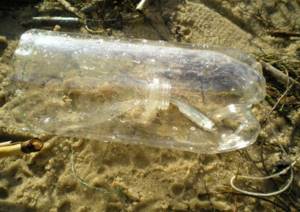
You need to pour a certain amount of water into the bottle, this is necessary so that the bottle on the surface is held at a given angle, and does not float on the surface.
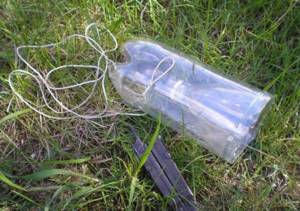
It is best to place gear in places where fishing spots are possible. A very important condition for bottle fishing is the attentiveness of the fisherman. Don't miss the moment when the fish gets hooked!
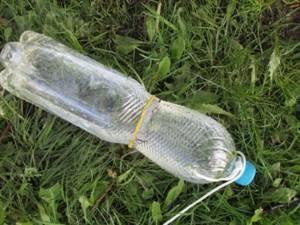
Zakidushki is the simplest and most effective tackle for catching burbot
A thicker line than on bottoms allows you to throw massive lead sinkers over a fairly large distance and literally tear the tackle through aquatic vegetation. In addition, thick fishing line is better visible with a flashlight in the dead of night. Sometimes a thin main line simply cannot be found on the sand of a burbot stretch. In addition, when casting, a thicker fishing line holds well in the hand without slipping, especially if you make a loop knot on the fishing line.
In the autumn, very heavy sinkers are not required to rig the hooks, as, for example, during the rapid flow of water in high water. Lead spoons or diamonds weighing 150-200 grams . In the spring, sinkers often have to be placed twice as heavy.
The main fishing line, as already mentioned, can be quite thick - 0.5-0.6 mm . Braid is not used in this type of fishing. The leashes will use fishing line - 0.28-0.3 mm . It is better to use hooks with a long shank and quite large ones - No. 8-12, domestic numbering . Double hooks are better suited for hooking live bait or cut fish. When using a blind rig, it is better to place one leash 8-10 cm above the sinker. There will be less confusion. In addition, the nocturnal predator does not like to rise higher from the bottom, like pike perch, and takes the hook closest to the sinker.

But sometimes it doesn’t hurt to have two different baits on one tackle, especially if the place is chosen correctly and burbot are taken here with periodic reliability. That is, here is the place of its fattening and the fish “path”. Then you can bait a cut, dead or live fish on one hook, and a lobe of worms on the other. It has been noticed that in the fall the burbot is better at catching fish, while in the spring it is better at catching worms. In addition, larger fish are caught using live bait and cutting, although they are taken less often than using a worm. In order for the cast to have two leashes that lie on the bottom and do not get tangled with each other, it is better to use sliding sinkers that have holes for the fishing line. The first leash will be in front of the sinker, and the second is tied above it. Both can and should be placed on the main line using a swivel and a clasp. The swivel protects the leash from twisting and tangling into a “beard” state, and the clasp allows you to quickly remove the caught prey without getting your cold fingers into the mouth and throat of the burbot, and then just as quickly put in a spare leash. (a method of installing baits for burbot in the fall)
Share with your friends!
Bottle fishing photo
Note!
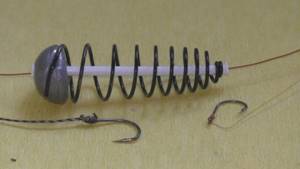
Fishing with a spring - rigs, baits, baits, gear and methods of fishing with a spring (80 photos)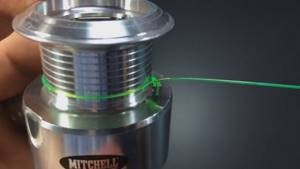
How to tie a fishing line to a reel - methods, tips on how to tie correctly and an overview of the most reliable knots (85 photos and videos)
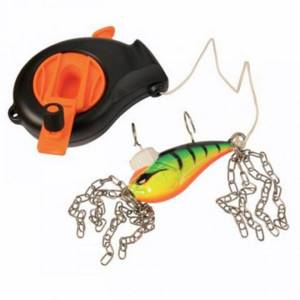
Cuts for wobblers and spinners - how to make a simple homemade cut. 110 photos and videos of practical tips
Help the project, share on social networks 

0

